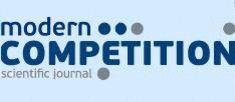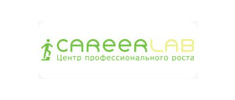articles
| The article examines models of indicative planning of control indicators of enterprises within the financial and industrial consortium of the electronic industry. The consortium may include enterprises of all types of ownership and organizational and legal forms, responsible for the implementation of plan tasks in accordance with the agreement on joining the financial and industrial consortium. The need to construct mathematical models for planning the development of enterprises, taking into account the possibilities of changing relationships, makes the study relevant. The main objective of the study is to develop models for assessing the control indicators of planned activities (control figures) of enterprises based on a comparison of their plans and available incentives. The scientific result of the research is the development of evolutionary-simulation models that ensure the selection of control indicators that take into account the capabilities and characteristics of enterprises, the ability to dynamically change their list, as well as forms of incentives. The models allow to produce control actions as a level of reward or punishment for legal entities depending on the extent to which the planned task has been fulfilled or not fulfilled. The reasons for the considering the production of electronic components to be “non-market” goods and services have been identified. An analysis of three most typical scenarios of the demand to production ratio was conducted: the product is in short supply, i. e. the demand is unlimited; the demand is comparable to the production volume; the demand is significantly less than the production volume. An example of planning enterprise indicators using control figures is given. The practical significance of the proposed models lies in the possibility of their use for developing recommendations for coordinating control indicators in a group of enterprises. Continue... | |
| This study presents a mathematical hiring model based on the integration of graph methods and blockchain verification. Unlike traditional recruitment approaches, the proposed model incorporates candidates’ network characteristics, such as degree centrality, betweenness centrality, and PageRank, while also utilizing trust scores (Trust Score) to predict hiring success. A cluster analysis of interactions between candidates, employers, HR platforms, and certification centers was conducted, revealing key patterns in professional network formation. The scientific novelty of this research lies in the development of a comprehensive personnel selection algorithm that, in addition to standard HR metrics, employs graph-based indicators and blockchain verification mechanisms to enhance transparency and accuracy in hiring. For the first time, a methodology for calculating trust scores based on network analysis has been proposed, allowing for a more objective decision-making process in HR analytics. The results indicate that the application of graph methods in recruitment reduces hiring time by 32 %, decreases the likelihood of mismatched hires by 18 %, and improves candidate success prediction accuracy to 85 %. These findings confirm the potential of integrating graph neural networks and blockchain verification in automated HR systems. Continue... | |
| Many problems requiring finding optimal solutions may arise in the process of building and managing socio-economic systems. The use of traditional methods of deterministic search is limited by the presence of nonlinear relationships between elements, conflicting interests of agents, hard and soft constraints, and uncontrollable environmental factors. For such problems, it is recommended to use stochastic methods that take into account the random nature of variables in the objective functions and constraints, which are capable of finding acceptable solutions in an acceptable time even under conditions of information uncertainty. In recent years, population metaheuristics, which simultaneously explore several solutions, have undergone significant development. Interest in these methods is due to their suitability for non-convex solution spaces, the absence of conditions on the type of the objective function, the ability to take into account hard and soft constraints, and high convergence. However, according to the no free lunch theorem, there is no metaheuristic that can solve all optimization problems. The article shows that the choice of a specific algorithm is based on the conceptual and mathematical formulation of the optimization problem and the specifics of the implementation of search operations. Despite their subject independence and high flexibility, in practice such algorithms do not provide acceptable results when used in their canonical form. In such situations, they should be modified to suit the specifics of the problem being solved. The article proposes to take into account uncertainty (incompleteness, inaccuracy, unreliability, ambiguity of incoming data) by hybridizing the selected metaheuristics with different methods of fuzzy logic used for identification, evaluation and aggregation of information NON-factors. The article also formulates recommendations for choosing an approach to reducing the set of optimization criteria for the case of multi-objective problems. The use of hybrid algorithms built on the basis of fuzzy logic and swarm intelligence methods will improve the stability and achieve the adequacy of optimization models. Continue... | |
| Currently, artificial intelligence methods are widely used in the practice of serial production enterprises. They are used to detect defects, classify and eliminate them, identify the causes of defects, predict the quality and properties of the resulting product, select optimal parameters of the production process, and identify and study its patterns. However, outside the field of research remains an important task from a practical point of view, the task of determining regulations for production parameters, i. e. the task of determining such ranges of values of these parameters, in which the probability of defects is minimal. In addition, there are no reports in the literature on the use of neural networks to eliminate or reduce the undesirable consequences of abnormal situations due to the prompt change of technological production parameters. The purpose of this article is to eliminate these gaps. This article shows the possibilities of solving these two important production problems using the example of serial production of casting ceramic rods intended for the manufacture of blades for gas turbine engines. This production is characterized by increased requirements for product quality, so the percentage of rejected products is especially high here and the problem of combating defects is especially relevant. The article describes the creation of neural network models of the production process, which are combined using the user interface into a single software package. Using this software package, a series of virtual computer experiments are performed using the scenario forecasting method, which made it possible to identify important patterns in the modeled process and, based on them, obtain and justify regulations for process parameters that ensure a minimum probability of defects. Further, using the same software package, emergency situations are modeled, for example, compressor failure, which is accompanied by a drop in the pressing pressure of the product and, as a consequence, an increase in the probability of defects. The article shows that using the developed software package, while the compressor is being repaired, without stopping the production process, it is possible to quickly reduce the increased percentage of defects caused by an emergency situation by changing only the process parameters. The methods for determining regulations and eliminating or reducing the undesirable consequences of emergency situations proposed in the article can be applied to other production processes. Continue... | |
|
№ 3(117)
30 june 2025 year
Rubric: Researching of processes and systems Authors: Kostin D., Gribova V. |
This paper formulates the building layout generation problem and its constraints. The most common solutions are given, the difficulties faced by designers are described. Due to the high labor intensity of classical approaches to solving this problem, the necessity of reviewing models, methods and systems for generating building layout plans is justified. Based on published literature reviews, three main approaches to solving the problem are highlighted: form grammars, genetic algorithms, and deep learning. For each approach the basic concepts and specifics of their use in the problem under consideration are described, comparative tables of features of models and methods in different works are given: types of grammars (context-free, context-sensitive), initial shapes and transformation rules for shape grammars, algorithms (NSGA-II, SPEA-II), populations and optimization criteria for genetic algorithms, architectures (CGAN, CGLO, Pix2Pix, Pix2PixHD) and characteristics of training samples for deep learning (image sizes, conditional channels, rasterization). Dataset preparation in various works devoted to solving the problem of generating building layout plans are described. We systematize the satisfied constraints of the problem in the considered approaches: spatial (site boundaries, street-road network, building heights and layout density) in all cases and architectural (building morphologies, land use types, architectural style and plans of adjacent territories) for genetic algorithms and deep learning models, and compare the reproducibility of solutions on other sites (cross-validation) and visualization capabilities in different works. The key trends and directions for further research highlighted by the authors of the reviewed studies are identified. Continue... |
|
№ 3(117)
30 june 2025 year
Rubric: Researching of processes and systems Authors: Rozhkov V., Fedotov V., Prokimnov N., Trofimenko S. |
The article uses structural computer modeling to study the digital method for constructing an identifier of the state and parameters of the equivalent circuit of an induction motor. The method is based on the use of difference equations of electric equilibrium of the motor instead of differential equations. In the identification process, the state of the motor is understood as an assessment in dynamics of the rotor flux linkage components and the shaft rotation speed. The use of a flux linkage identifier is caused by the difficulties of direct measurement of the magnetic field components. In practice, signals of electrical variables and speed are used for this purpose, and the difficulties of constructing an identifier consist only in the formation of the initial conditions of flux linkage. If the speed sensor must be excluded from the design scheme of the electric drive, a completely sensorless version is implemented. In this case, the speed estimate is affected by changes in the parameters of the equivalent circuit of the machine due to heating of the windings and the effect of current displacement. The use of simulation modeling tools in MatLab made it possible to analyze the details of the flux linkage identifier implementation in three variants of combinations of input signals available for assessment. The errors arising in the identification process are analyzed. The necessity of using a low-pass filter with a small time constant at the identifier output for compensation of high-frequency components of the modulated voltage feeding the induction motor from the inverter is revealed. The speed identifier variant is simulated on difference equations taking into account the drift of the equivalent circuit parameters. The results are compared with the identification method based on the application of differential equations and sliding modes. The considered approaches to the construction of a system for estimating the parameters and state of the motor can be used in information systems when designing identifiers in a sensorless induction electric drive. Continue... |



